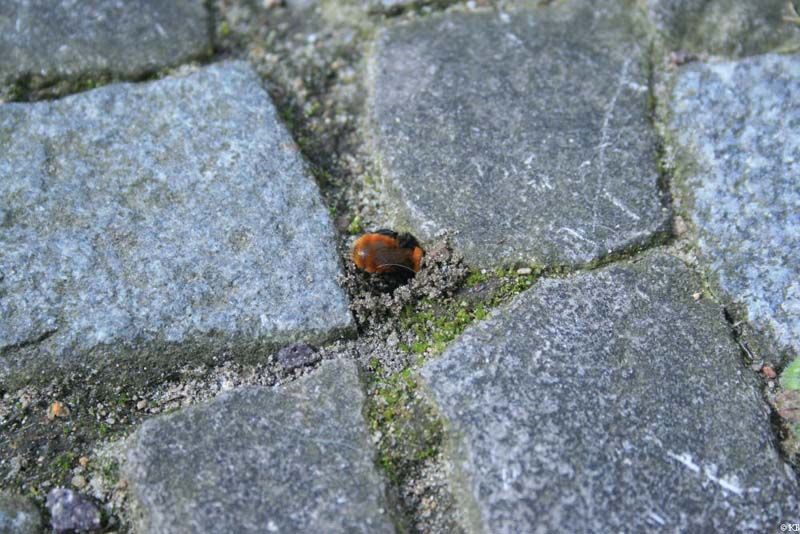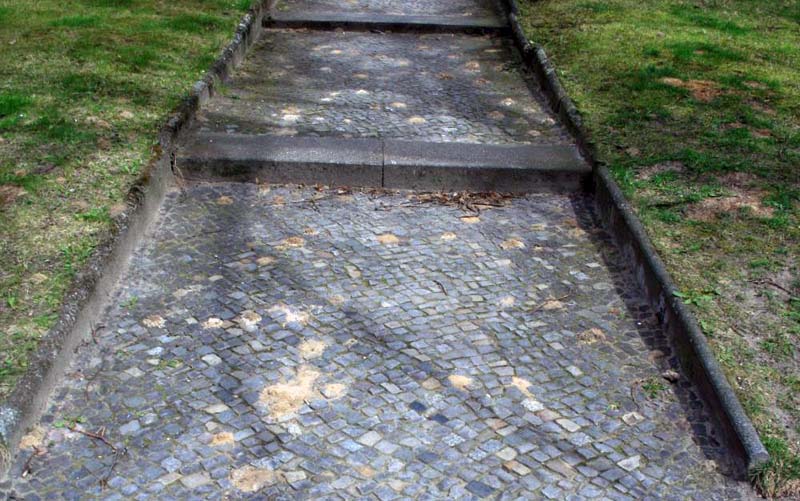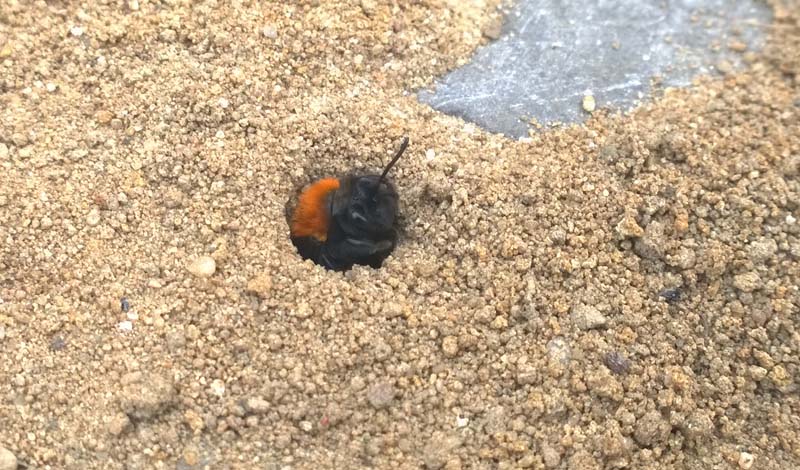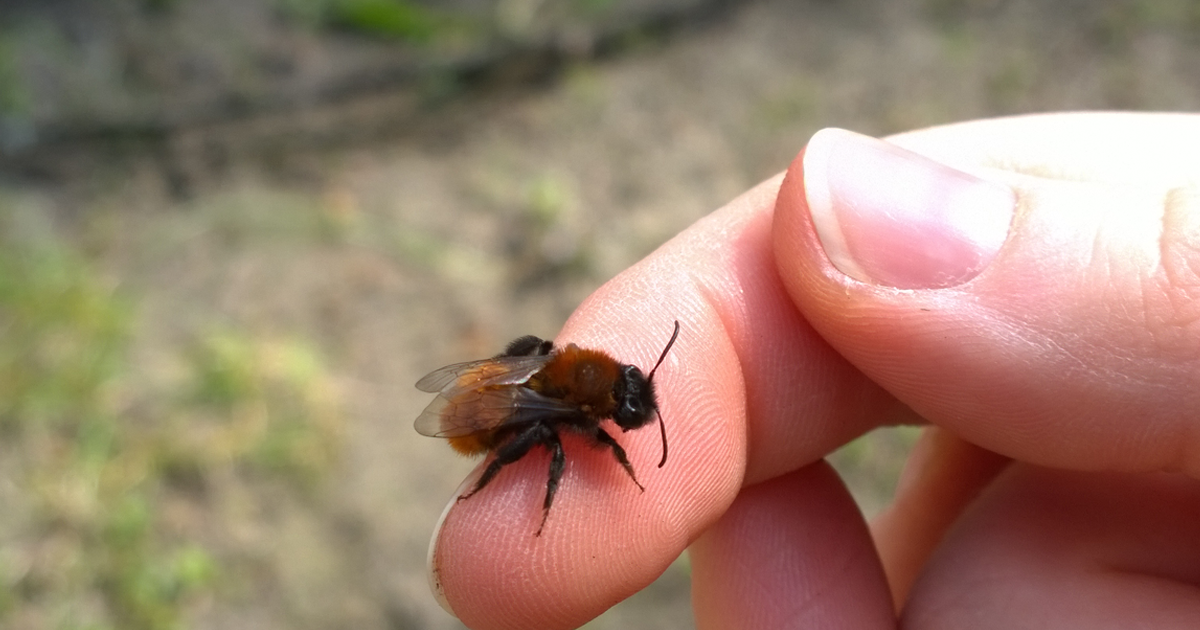In the course of the energetic renovation of the houses in the Dillgesstraße in the Berlin district Lankwitz, which has been taking place since May 2016, a very large and valuable population of the fox-red sandbee (Andrena Fulva) was threatened by destruction. By depositing building material on the nesting areas of wild bees, they would have had no access to the already populated nesting sites or would have been locked up and starved by material in the nesting tunnels.
Unlike honey bees, the fox-red sandbee is a solitary bee species (i. e. loner) that builds its nests in the ground and feeds its brood without the help of fellow species. All tasks are carried out by a single bee, from the construction of the brood chambers to the provision of feed and the laying of eggs. After successful work the bee dies and your offspring hatches next year to start the cycle again.

Picture 1: Construction of a new nest in the mosaic pavement of a footpath from a bum perspective
As the name suggests, the sandbee likes to build its nests on sandy surfaces. In the case of Dillgesstraße, the lawn and the pavement of the pavement seem to be particularly suitable. From March to May one can see more and more small piles of sand being created there, which are produced by the hatching bees, which partly use these holes for the creation of their own brood.
Picture 2: Access with mosaic pavement to one of the houses in the Dillgesstraße / sand hills without end
Normally, the population density of sand bees is rather low, which is why the number of individuals in Dillges Strait is already a treasure to be preserved.

Picture 3: The new generation chilled and waiting for better weather to collect pollen and nectar for the next generation.
According to the Federal Nature Conservation Act, all wild bees are also under special protection. The reason for this is the fact that it produces a pollination performance up to 3 times higher than the normal honeybee, which is an important economic factor in addition to the advantages for nature. Not to mention the benefits for biodiversity (biological diversity). But they are extremely endangered by field poisons such as neonicotinoids or glyphosate. The same applies to honeybees, which would have died out in Germany without beekeepers due to climate change, conventional agriculture and the Varroa mite.
Thanks to our knowledge of the Federal Nature Conservation Act, we at Your Little Planet! rely on dialogue with the Lower Nature Conservation Authority for the Steglitz-Zehlendorf district and the Upper Nature Conservation Authority of the State of Berlin. The aim was to find a solution to preserve the population and to minimise the disturbance caused by the construction work during the bees' activity period. During a joint inspection with the site manager, an expert, representatives of both nature conservation authorities and us, we were able to work out specifications for largely undisturbed remediation work for the benefit of the sandbee population.
Special thanks from YLP go above all to a lady of the district office Steglitz-Zehlendorf which does not want to be named by name, as well as Mr. Bernd Lange of the Senate administration for urban development and environment, which showed a lot of commitment and reacted also in critical times fast. Thanks also to the executing company Landherr / Architekten und Ingenieure GmbH and Mr. Niehoff as construction manager, for the creation of alternatives for the benefit of the sand bees.
Translated with: https://www.deepl.com/translator

